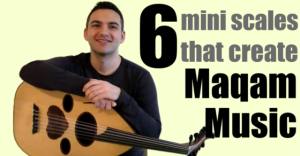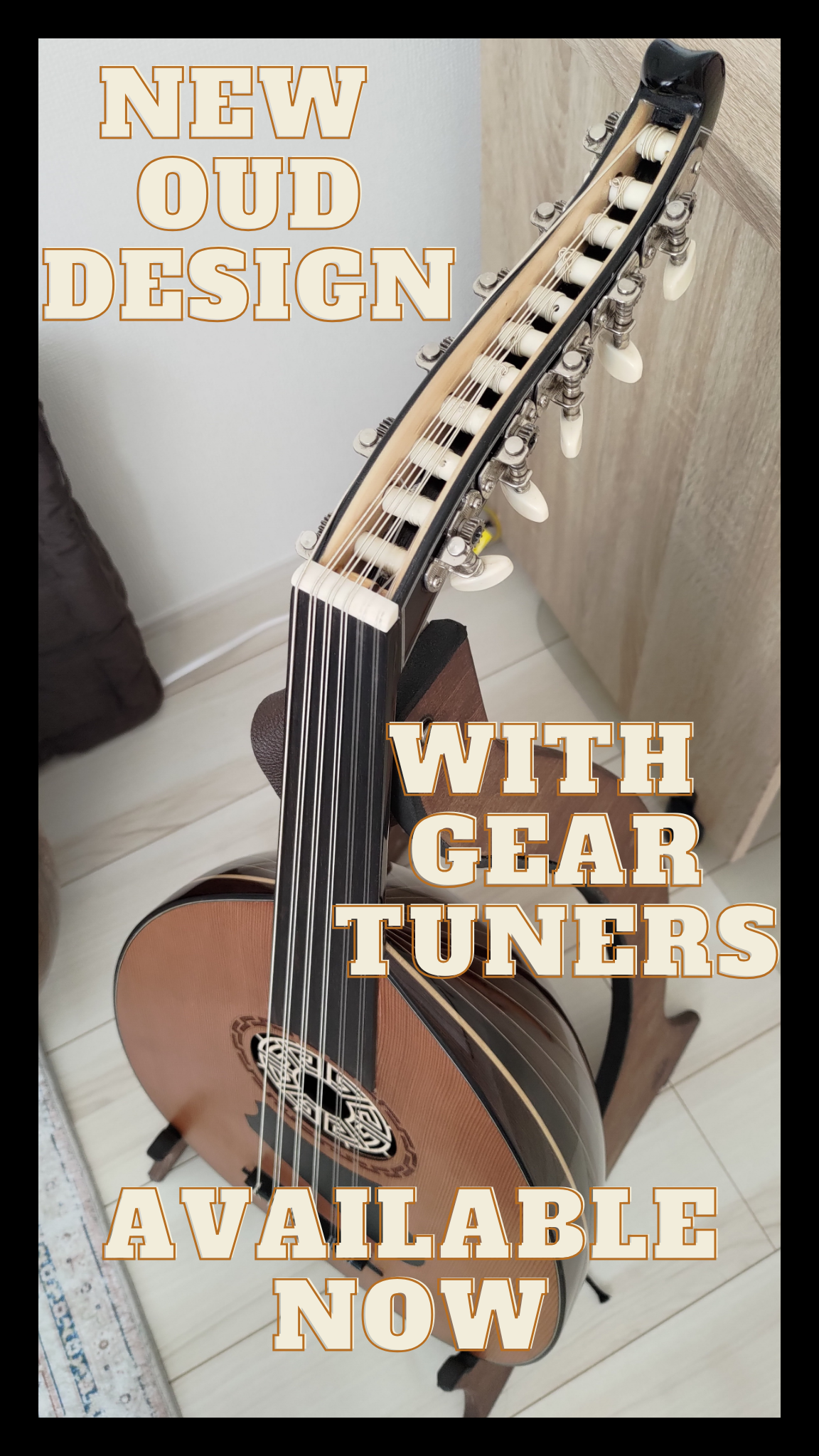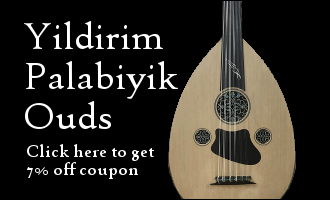
In this week’s video, I want to share a shortcut with you. A shortcut that will help you learn maqam music.
If you’re just learning the Oud or Middle Eastern Music, then you’re going to eventually learn how to play a maqam.
I know that maqams are really, really hard to get into. When I started learning, I didn’t know what maqam I was hearing or playing… But eventually it all started to fall into place.
Here are a few things that will help you along the way.
1. Most basic maqams are just combinations of mini scales (called jins singular/ajnas plural in Arabic).
2. Put them together in different ways, and emphasis different notes, and you have maqam music.
3. These mini scales can be isolated and they have names.
- Jins Ajam
- Jins Nahawand, aka Busalik
- Jins Kurd
- Jins Rast
- Jins Hijaz
- Jins Saba
Some of you are thinking… wait about Jins Bayati and Jins Segah? Well, you can find them inside Jins Rast. (BIG SECRET)
- Jins Ajam
Jins Ajam is four notes closely resembling the first four notes of the major scale. C D E F.
- Jins Nahawand aka Busalik
Jins Nahawand is most closely related to the first four notes of the minor scale. C D Eb F.
- Jins Kurd
Jins Kurd most resembles the first four notes of the phrygian mode. C Db Eb F.
- Jins Hijaz
Jins Hijaz is like an augmented/harmonic minor scale. It has that demonic flavour to it. It’s characterized by a large interval between the 2nd and 3rd notes. C Db E F. In some cases the interval between the 2nd and 3rd notes is smaller, that really makes these notes quartertones.
- Jins Rast
Jins Rast is really close to the first five notes of a major scale, except the third note, the third degree is flattened by a quarter. This note is between E natural and E flat. C D Eqb F G. You can also call this note half-flat, it’s up to you.
- Jins Saba
Jins Saba is not found in western music. It’s characterized by smaller intervals. C Dqb Eb E.
More Ajnas
Now there are other ajnas in Middle Eastern music, and some of them can be derived from Jins Rast. By derived, I mean they are hidden in there.
Jins Bayati, aka Ushak is D Eqb F G, that’s the same intervallic structure as rast except beginning on the 2nd degree, note D. That is, the tonal center is D.
Jins Segah is three notes within jins Rast. The tonal center is Eqb. Eqb F G.
The Birth of a Maqam
This is where it starts to get cool. Now I’ll show you how to can put these ajnas together to make different maqams.
When I learned how ajnas are put together, this blew my mind. Because before this I always viewed scales as a set of 7 notes, and these 7 seven notes just did their thing. Each one had it’s place. But now I see that these mini scales build upon each other and create systems. And each one has it’s own colour, tone, and feeling.
Maqam Ajam (C Major Scale)
If you take mini Ajam scale starting on C, C D E F, and you add another mini ajam scale starting on G, G A B C, with the same intervals, you get Maqam Ajam. Does it look familiar to you? It’s quite basically the C major scale.
Maqam Hijaz Kar
If you take mini Hijaz scale starting on C, C Db E F, and you add another mini Hijaz scale to it starting on G, G Ab B C, you get Maqam Hijaz Kar.
Maqam Shawq Afza
If you take mini ajam scale starting on Bb, Bb C D Eb, and you add another mini hijaz scale starting on F to it, you get Maqam Shawq Afza. It’s like half major scale half harmonic scale.
Check out the video below to see it all in action.
If you really want to get into this topic in depth, I invite you to check out the Maqam Mastery Program, which I have designed to help you learn how to hear the difference between the different Maqams and the different ajnas that create them.
And don’t forget to sign up for our newsletter to stay on top of all the free Oud lessons that Oud for Guitarists has to offer. Sign up below!






Excellent and very useful post/video Navid. You do a great job of explaining it in simple terms. 🙂